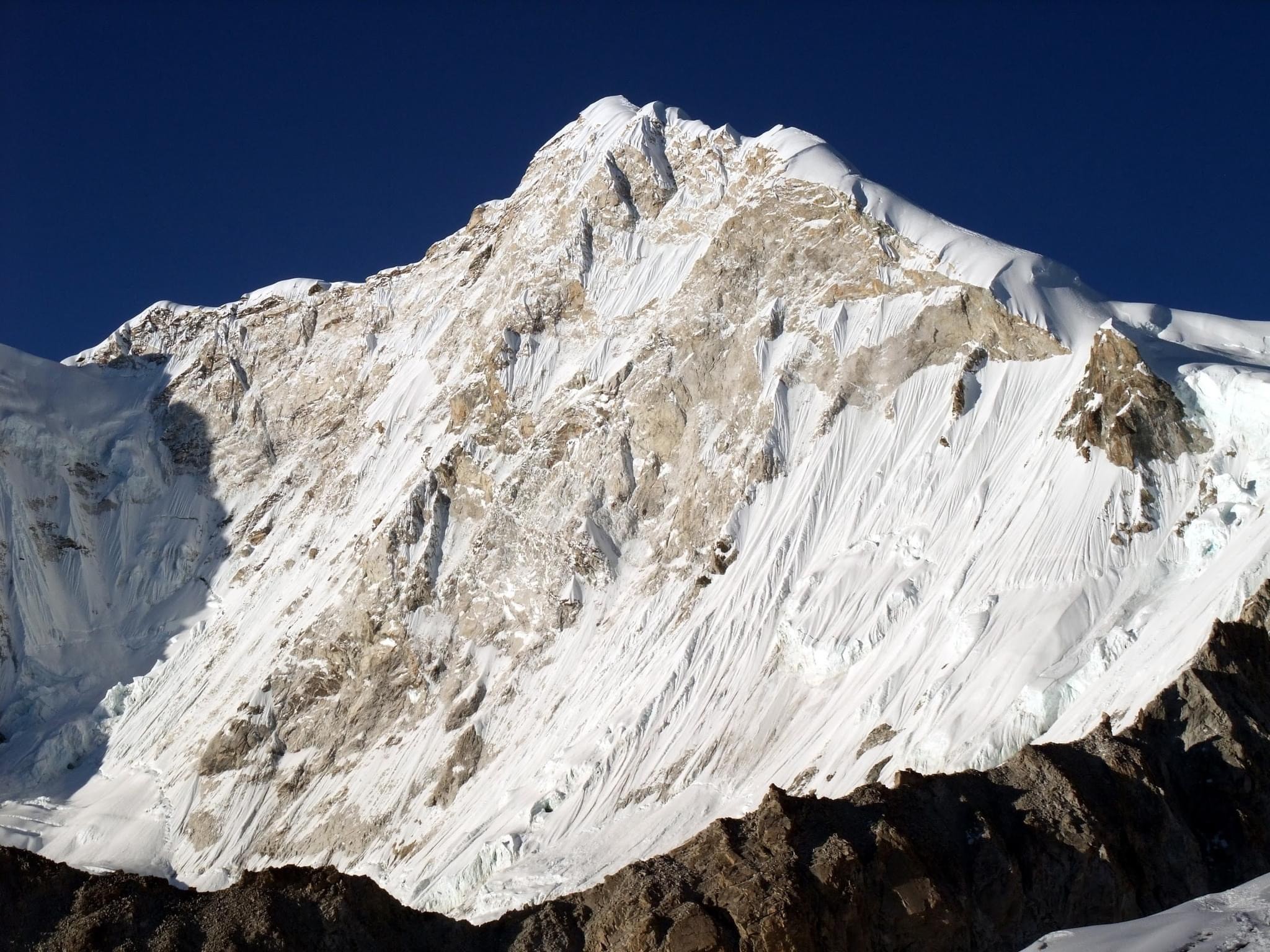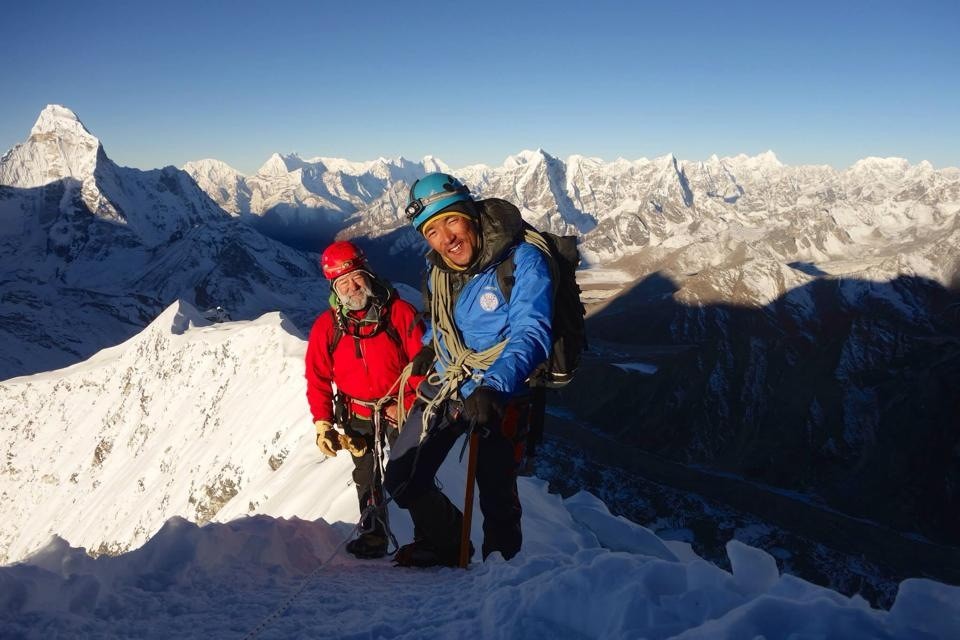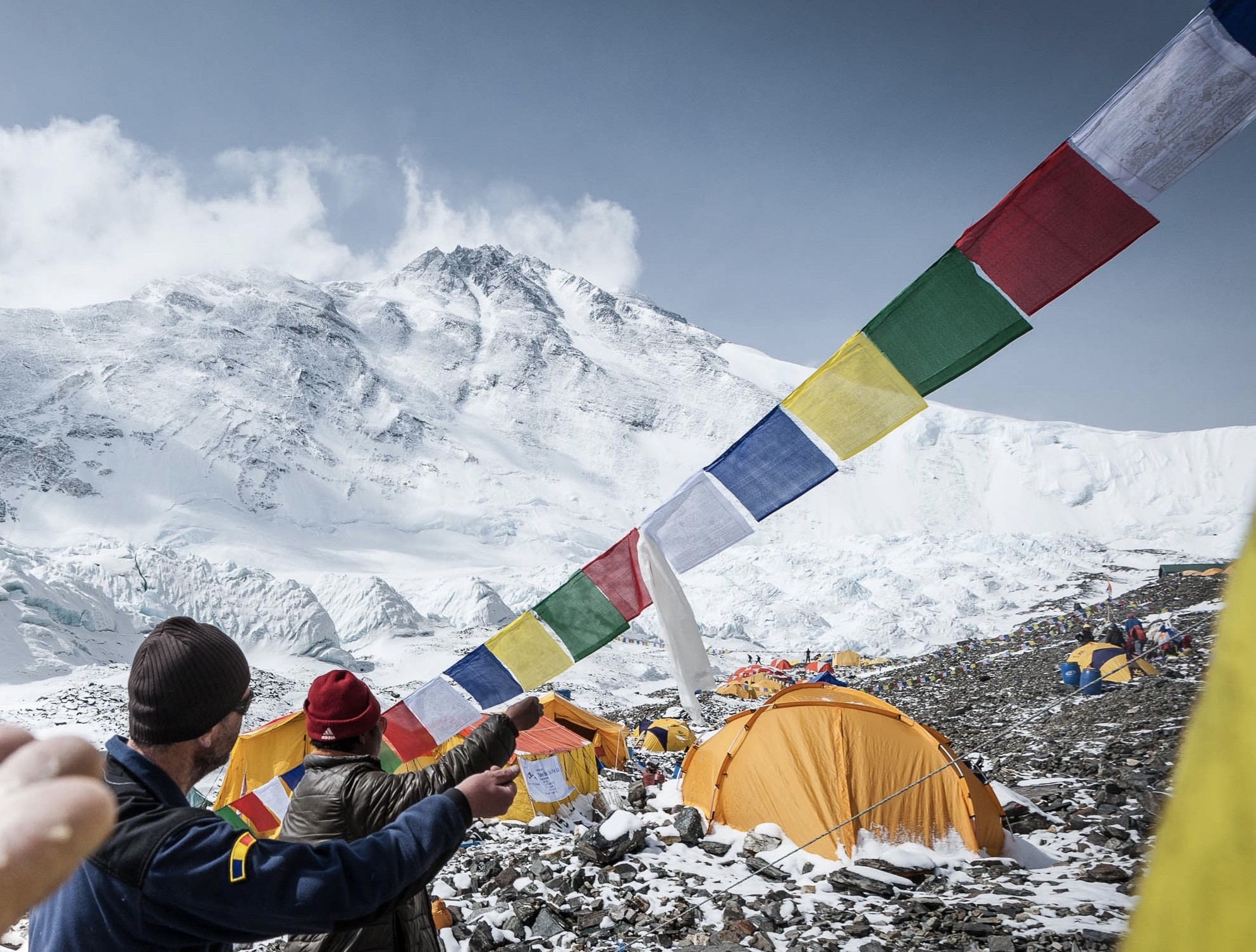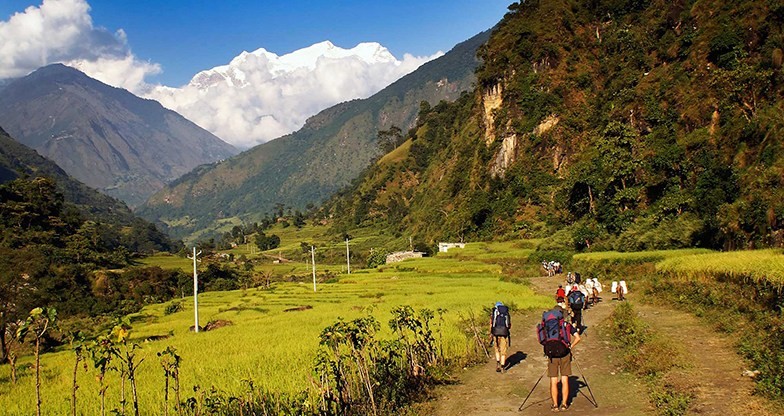

Mount Baruntse (7,129 m) expedition is a most thrilling adventure for climbers who wish to summit a 7000- meter peak in Nepal. It is situated in the central Khumbu region-just west of the world's 8,000-meter giant Mt. Makalu and slightly east of Mt. Lhotse and Mt. Everest. Explore the fascinating Baruntse 7,152m expedition and delve deep into the beauty of Nepal. As one of the most magnificent 7000m peaks in the country, Baruntse promises not only a summit adventure, but also a journey through the cultural and natural diversity of Nepal. With its moderate difficulty, Baruntse offers a challenging but achievable peak in the heart of the Himalayas. Its impressive ice pyramid rises majestically, surrounded by steep rock and ice flanks that drop off in all directions. The peaks of Mera Peak and Baruntse are perfectly to combined and are ideal as a preparation adventure for the first eight-thousander. But they are also ideal for those who want to gain their first expedition experiences. This expedition offers the ideal introduction to high altitude and expedition mountaineering and to get to know Nepal. With the previous ascent of Mera Peak at 6,476m / 21,247 ft height, we are well prepared and acclimatized, hence can start directly towards the summit of Baruntse shortly after arrival at the base camp. Due to the partly very remote region and the varied program, beginners, as well as mountain professionals, can still take home unique experiences from our expedition.
Our Mera Peak & Baruntse expedition itinerary has been carefully designed so that all expedition members have their acclimatization properly and have sufficient strength and skill to cope with the necessary ascents from and back to base camp before setting out for the summit push. Nepal, with its majestic mountains and rich cultural traditions, offers the ideal backdrop for this expedition. Every step on this summit adventure is a journey through the history, nature and hospitality of Nepal. Be there and experience not only the triumph over the summit, but also the unforgettable facets of Nepal. Discover the unknown and become part of this unique Baruntse Expedition!

Trip Highlight
DAY
1
DAY
2
DAY
3
DAY
4
DAY
5
DAY
6
DAY
7
DAY
8
DAY
9
DAY
10
DAY
11
DAY
12
DAY
13
DAY
14
DAY
15
DAY
16
DAY
17 - 26
DAY
27
DAY
28
DAY
29
DAY
30
DAY
31
DAY
32
The main emphasis while on the adventure is on keeping warm and dry while still being lightweight. You should bring a rucksack or backpack for the gear required during the day. Your pack should contain items such as warm clothes, a jacket, a camera, water bottles, a personal first aid kit, and snacks. The weight limit is 5kg. A porter will carry the rest of your personal equipment packed in a duffel or kit bag. The weight limit for your duffel bag is 15 kg however it is different in the case of peak climbing and expedition.
Ama Dablam requires various types of gear both technical and non-technical. It might be confusing what to or not to bring along on your expedition. So, we have made this Ama Dablam Equipment list to make your task easier.
Climbing Gear
Hardware
Camp Accessories
Footwear
Clothing
Outerwear Accessories
Personal Accessories
Travel Items
Trekking Gear
1
Baruntse Peak is best suited to climb during two climbing seasons. Autumn (September - November). Note - Mount Baruntse is one of the remote climbing peaks with very few teams attempting the climb every year. You can be certain there won’t be many climbers or traffic during your expedition.
2
Experiences - Previous high altitude (3000M - 6000M+) alpine/mountaineering climbing experiences are absolutely necessary in order to climb Mount Baruntse or other 7000M+ peaks. It necessarily doesn’t have to be in Nepal but can be anywhere else in the world. Climbers need to have good knowledge and experience in hiking/climbing using crampons on snow, ice, and steep surfaces. Must be comfortable and proficient in using a fixed rope to climb on steep and exposed sections. Climbers should be familiar with the use of climbing gears, and basic rope techniques like tying safety knots, and abseiling when coming down from the mountains, and have the mental toughness to climb in cold and windy conditions. Local Guides - By Nepalese law, when issuing permits for high altitude peaks above 6000M+ guides are a must. To issue a permit for Baruntse Peak climbing it will have to go through a registered local company. For intermediate experience level climbers, we highly suggest climbing the peak with guides. The usual climbing route does have a crevasse and there can be other danger points along the unexplored routes. However, if you are one of the experienced climbers with tons of climbing routes under your belt then there can be several routes that even local guides may not be able to climb. So even if you climbers want to explore new routes then taking a guide as a backup option would be a wise choice.
3
Claiming Mera Peak climbing (6,476 M) prior is good way to acclimatize and before we head onto Baruntse. The route itself is a very non-technical, steep climb on the ice and snowy surface. Mera mountain is classed as a trekking and climbing peak. With the previous ascent of Mera Peak at 6,476m / 21,247 ft height, we are well prepared and acclimatized, hence can start directly towards the summit of Baruntse shortly after arrival at the base camp.
4
Baruntse expedition is graded at AD+ \ 4 in difficulty. We cannot stress it enough, but it is very important climbers are mountain fit and strong before starting the expedition. In total, we will have 15 days of alpine climbing days and the climb will demand every ounce of your fitness and awareness. Breathing is challenging but with proper acclimatization done ahead of time and by staying well-hydrated and consuming enough nutrition, you should be able to cope with the altitude.


